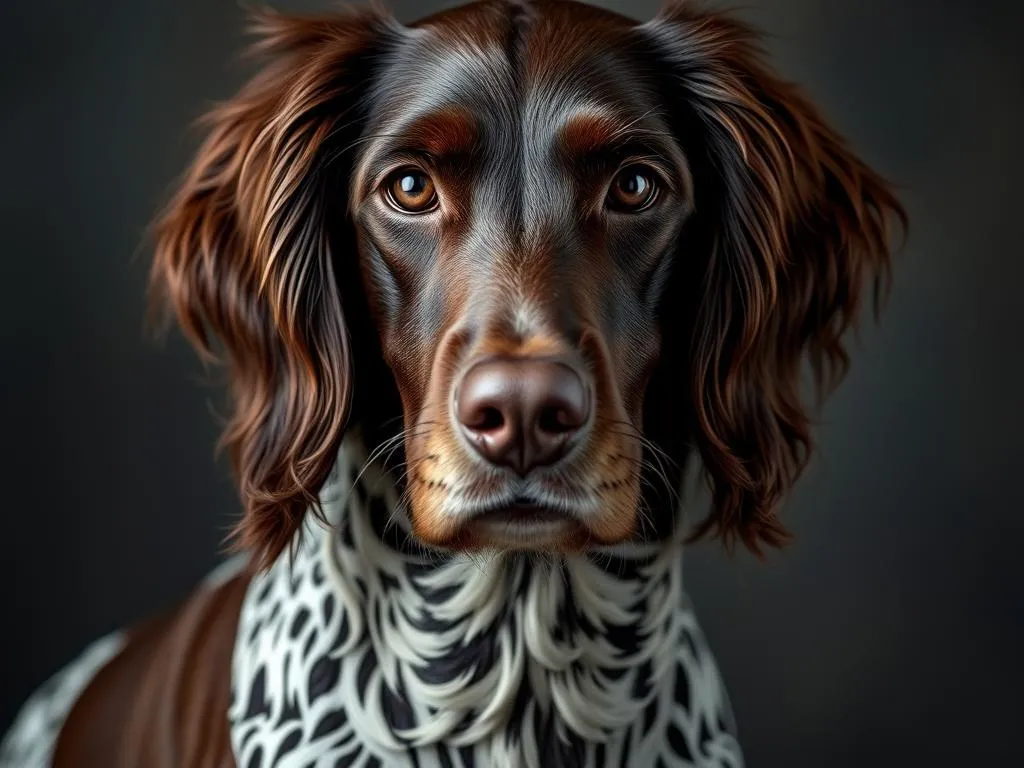
Introduction
Dog breeds play a significant role in our lives, each breed bringing its unique characteristics, history, and purpose. One breed that stands out for its versatility and charm is the German Longhaired Pointer. This breed has a rich historical background tied closely to its utility in hunting and sport, making it a favorite among outdoor enthusiasts and families alike. Understanding the specifics of dog breeds, particularly the German Longhaired Pointer, is crucial for potential owners to ensure a good match between the dog and their lifestyle.
Overview of Dog Breeds
Definition of Dog Breeds
A dog breed is defined as a specific group of domestic dogs with distinct characteristics, including appearance, temperament, and behavior. These traits are passed down through generations and are essential for identifying the breed’s suitability for various roles, whether it be as a working dog, a family companion, or a show dog.
Classification of Dog Breeds
Dog breeds are commonly classified into categories based on size and purpose:
- Size: Breeds can be small (e.g., Chihuahua), medium (e.g., Beagle), or large (e.g., Labrador Retriever).
- Purpose: Breeds are also categorized by their intended use, such as working (e.g., Rottweiler), hunting (e.g., German Longhaired Pointer), or companion (e.g., Pug).
Breed registries, such as the American Kennel Club (AKC) and the Fédération Cynologique Internationale (FCI), maintain standards for each breed, outlining acceptable characteristics and traits.
The German Longhaired Pointer
Breed History
The German Longhaired Pointer has its origins in Germany, where it was developed in the late 19th century. This breed was created to serve as a versatile hunting companion, adept at both retrieving game from water and tracking on land. Its development was aimed at producing a dog that could work in various terrains and conditions, making it invaluable for hunters. Over time, the German Longhaired Pointer has also gained popularity in field trials and dog sports due to its intelligence and eagerness to please.
Physical Characteristics
The German Longhaired Pointer is a medium to large-sized breed, typically weighing between 55 to 75 pounds and standing 21 to 28 inches tall at the shoulder. This breed is known for its distinctive long, flowing coat, which can be found in a variety of colors including brown, black, and various combinations of white and brown.
Key physical features include:
- Ears: Long, hanging ears that are covered in feathering.
- Tail: A long and well-feathered tail, often held in a horizontal position when the dog is in motion.
- Build: A strong, athletic build that emphasizes stamina and agility, essential for hunting.
Temperament and Behavior
The German Longhaired Pointer is known for its friendly and gentle demeanor. They are intelligent, eager to learn, and highly trainable, making them suitable for families and individuals alike. This breed is typically good with children and can interact well with other pets if socialized properly from a young age.
Personality traits include:
- Loyalty: They form strong bonds with their families.
- Playfulness: Enjoys playtime and can be quite energetic.
- Sensitivity: Responds well to positive reinforcement but can be sensitive to harsh training methods.
Health and Care
Common Health Issues
Like all breeds, the German Longhaired Pointer can be prone to certain genetic health issues. Common concerns include hip dysplasia, elbow dysplasia, and certain eye conditions. Regular veterinary check-ups and preventative care are essential to catch any potential health issues early.
Nutrition and Diet
A balanced diet is crucial for the health of the German Longhaired Pointer. High-quality dog food formulated for medium to large breeds is recommended, with specific attention to their age and activity level.
Feeding guidelines typically suggest:
- Puppies: 3-4 meals a day.
- Adults: 2 meals a day.
- Treats should be limited to maintain healthy weight.
Grooming Needs
The grooming needs of the German Longhaired Pointer are moderate due to its long coat. Regular brushing is essential to prevent matting and to reduce shedding.
Grooming tips include:
- Coat Maintenance: Brush at least once a week, more frequently during shedding seasons.
- Bathing: Bathing should be done as needed, typically every few months unless the dog gets particularly dirty.
- Nail Trimming and Ear Cleaning: Regular nail trims and ear cleaning are also important to maintain overall health.
Training and Socialization
Basic Training Requirements
Training is essential for the German Longhaired Pointer due to its intelligence and energy levels. Obedience training should start early and focus on positive reinforcement techniques. Basic commands such as sit, stay, and come can help establish good behavior and strengthen the bond between the dog and owner.
Socialization Techniques
Early socialization is crucial for the German Longhaired Pointer. Exposing them to various environments, people, and other animals can help them become well-adjusted adults. Socialization should include:
- Puppy Classes: Enroll in classes to help them learn and interact with other dogs.
- Field Trips: Take them to parks, pet-friendly stores, and public places to expose them to different sights and sounds.
Living with a German Longhaired Pointer
Ideal Living Conditions
The German Longhaired Pointer thrives in environments where they have space to roam and play. While they can adapt to apartment living, a house with a yard is ideal. This breed requires a secure area to run and play, as they are active and energetic.
Exercise and Activity Level
Regular exercise is a must for the German Longhaired Pointer. They require at least 1 to 2 hours of physical activity each day to stay healthy and happy. Recommended activities include:
- Daily walks or runs.
- Fetch and other interactive games.
- Participation in dog sports such as agility and obedience trials.
Interaction with Family
Building a strong bond with your German Longhaired Pointer involves quality time spent together. Engaging in activities such as hiking, playing fetch, or simply relaxing at home helps strengthen this relationship. These dogs thrive on companionship and enjoy being included in family activities.
Pros and Cons of Owning a German Longhaired Pointer
Advantages
Owning a German Longhaired Pointer comes with several benefits:
- Loyalty and Companionship: They are known for their loyalty and affectionate nature.
- Versatility in Activities: This breed is adaptable and can participate in various activities, including hunting, agility training, and family outings.
Challenges
However, potential owners should also be aware of challenges:
- Time Commitment: They require a significant time commitment for training and exercise.
- Potential Health Issues: Like any breed, they may face specific health challenges that require attention and care.
Conclusion
The German Longhaired Pointer is a remarkable breed with a rich history and a multitude of positive attributes. Their loyalty, intelligence, and versatility make them excellent companions for active individuals and families. When considering a pet, it’s essential to understand the breed’s characteristics and lifestyle needs to ensure a harmonious match. Responsible pet ownership and thorough research into the breed can lead to a fulfilling relationship with your German Longhaired Pointer.
FAQs
-
What is the average lifespan?
The average lifespan of a German Longhaired Pointer is typically around 12 to 14 years. -
Are they good with children?
Yes, they are generally good with children and can be very affectionate and playful. -
How much exercise do they need daily?
They require at least 1 to 2 hours of exercise daily to maintain their health and happiness.









